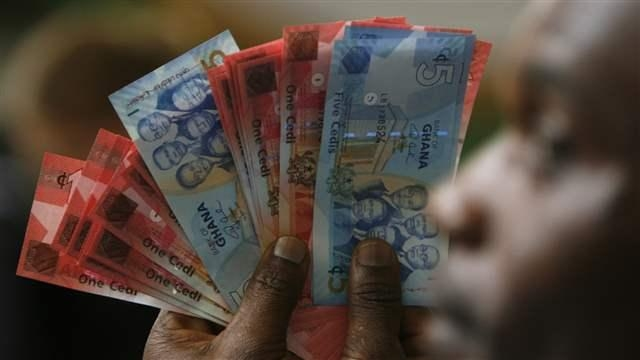Over the past two and a half months (through the middle of March 2022), the cedi has depreciated by about 14.81% against the US dollar in the interbank market; rising from an exchange rate of GH¢5.98 to the US dollar, at the beginning of the year, to GH¢7.02 by the middle of March. As a former American Major League baseball catcher, Lawrence Peter “Yogi” Berra, would remark, “it’s déjàvu all over again”. In 2000, the cedi, spun by a witches’ brew of pernicious economic challenges, engaged in a dizzying dance along an economic precipice and depreciated by 50%. We learned very little from it.
To a lesser extent, but no less economically cataclysmic, was the 17.0% depreciation of the cedi in 2008. A storm started gathering in 2013 when the cedi depreciated by 19.49%, but we ignored the signals. The following year, 2014, the cedi depreciated by 25%, increasing from a cedi-to-dollar exchange rate of GH¢2.36 at the beginning of the year to GH¢3.15 at the end. All along, we did very little, if anything at all, to ensure any meaningful level of the cedi’s stability.
In 2010, I published an article on the depreciation of the cedi. At the time, the cedi was reeling. It had had a terrible time during the preceding two years against the US dollar, depreciating by 32.6% over the period, from an exchange rate of GH¢0.95 to the US dollar, at the beginning of 2008, to GH¢1.41 at the end of 2009. Again, in 2012, I published a similar article highlighting what I strongly believed then, and still do, to be the primary reason for the currency instability of most developing countries – liberalized exchange rate regimes underpinned by structurally weak economic and institutional settings. Since the beginning of 2000, the cedi (now Ghana cedi) has lost over 95% of its value against the US dollar, rising from GH₵0.35 to the US dollar, at the beginning of 2000, to GH₵7.02 by the middle of March 2022.
Today, we are on the cusp of another sharp cedi depreciation as occurred in 2000, perhaps a more virulent one than we have ever experienced. At around USD2,620 per ton and USD1,985 per ounce, cocoa and Gold, two of Ghana’s key foreign exchange earners, respectively, are not doing baldly at all. Expectedly, the net effect of these developments should be having a calming effect on the depreciation of the cedi against the major currencies. On the contrary, the storm seems to have picked up steam, with the cedi depreciating by almost 15% over the past two and a half months alone.
Characteristic of us (Ghanaians), we have embarked on an insidious orgy of blame-gaming and prescribing quick fixes that only “kick the can down the road”. Just as in the past, I have decided to publish an updated version of the previous article in the hope that it stirs up serious discussions of alternative solutions. Solutions that may be more enduring, such as a currency board. The experiences of Singapore and Hong Kong, among other implementing countries, suggest that it may be a better fix than what currently pertains, given the structure of Ghana’s economy.
Background to the Cedi’s Plight
Since independence, the battle for economic development, in Ghana, has been fought with varying degrees of intensity by various administrations. But just as bad institutions stall progress, even in an environment of good laws, unstable currencies undermine economic development, even in structurally sound economies. Economic history abounds with evidence suggesting that a “sound currency” is the foundation for sustainable economic development. Ghana needs a sound and strong counterweight to wanton government fiscal overreach to curb the incentive for habitual government overspending and extinguish the unbridled appetite for imported consumer goods, which culminate in the insidious effect of cedi depreciation. The toolkit of the Bank of Ghana, as it is currently structured, is very ill-suited for providing such counterweight and ensuring cedi stability. Ghana needs a currency board.
The history of currencies shows, unambiguously, that the gap between the currencies of developed and developing countries has widened significantly since the collapse of the Bretton Woods monetary system, in 1973. Hitherto, and before the 1914 gold standard, both developed and developing countries had sound currencies; currencies that were stable, credible and largely convertible.
Today, most developed countries still have, more or less, stable currencies, while most developing countries, on the other hand, have unstable currencies. The loss of sound currencies in developing countries, the literature suggests, is partly attributable to the establishment of central banks in most developing economies following independence. Until the 1920s, in Latin America, and the 1950s in Africa, the Middle East and Southeast Asia, central banks did not become widespread.
For most developing countries, especially former colonies, establishing a central bank became a political imperative after independence. Thus, Ghana issued its first national currency, the Ghana pound, shilling and pence in 1958. With that act, the Bank of Ghana formally took over the issue of currency (notes and coins) from the West African Currency Board, and started on a journey of perpetual currency depreciation and decline in capital accumulation.
Within a decade of establishing central banks, developing countries began experiencing unsound currencies, characterized by high inflation, restricted convertibility, capital flight, low domestic and foreign investment and, consequently, low economic development. In some cases, widespread corruption, institutional decay and fiscal indiscipline also ensued. A number of developing countries that had net capital inflows under colonial rule became net exporters of capital a few years after independence, when their currencies became unstable.
In August of 2000, while working at a brokerage firm in Ghana, we authored a research report entitled “Stabilizing the Cedi, the Currency Board Option”. The main recommendation of the report was for monetary reform, consisting of the redenomination of the cedi and the establishment of a currency board. The rationale for the redenomination of the cedi was to facilitate economic activity by mitigating the risks associated with carrying huge amounts of cash for relatively simple financial transactions, while the reason for recommending the establishment of a currency board was to stabilize the cedi. It was also aimed at laying the foundation for low inflation and interest rates, improve macro-economic stability (through a disciplined approach to fiscal management), create an attractive environment for foreign direct investment and improve the rate of economic growth.
On the redenomination of the cedi, the report recommended the issue of one new cedi for every ¢1,000 in circulation. While the redenomination of the cedi was implemented in 2007, albeit based on a higher conversion ratio (knocking off four zeroes instead of the three which was proposed (a situation, which incidentally, resulted in some price escalation and a minimal rise in consumer inflation), the establishment of the currency board still remains an outstanding project.
Notwithstanding the occasional stability of the cedi, the recurring macro-economic dislocations, which consistently result in sharp depreciation of the cedi, surge in consumer inflation, weak economic activity and huge fiscal deficits, make a very compelling case for further monetary reform. The cedi may be stabilized temporarily, at a point in time, given a rise in Ghana’s foreign reserves. But the fact is that it is never sustainable. What we need is a vehicle for sustainable cedi stability.
The Role and Objectives of a Currency Board
A currency board is a monetary institution that issues notes and coins fully backed by a foreign currency, called the “reserve” currency. The issued currency is fully convertible into the reserve currency at a fixed exchange rate and on demand. A currency board system comprises the currency board, commercial banks and other financial institutions.
There are, typically, two basic types of currency board institutions: orthodox currency boards and pseudo currency boards. While pseudo currency boards retain some of the attributes of central banks, such as exercise of discretionary monetary policy, acting as lender of last resort to commercial banks and holding variable reserve currency against the monetary base, (the sum of notes and coins in circulation), orthodox currency boards are rule-based institutions that hold, at least, 100% of reserve currency against the base money and do not engage in discretionary monetary policy. In an orthodox currency board system, the government cannot finance its spending and monetize its debt by printing money.
Government spending in an orthodox currency board system is subject to hard budget constraints and can be financed only through borrowing and taxation. An orthodox currency board provides full convertibility of local currency to reserve currency, and vice versa, at a fixed exchange rate, and on demand. In an orthodox currency board system, an exchange rate of, for example, GH¢7.00 to US$1.00 will be fixed and honored at any time, for any amount and on demand.
Currently, orthodox currency board systems operate in several countries including, Hong Kong, Djibouti, Gibralta, Bermuda, Cayman Islands and the Falkland Islands. Countries such as Singapore, Estonia and Bulgaria operate pseudo currency boards, usually referred to as currency board-like systems.
One of the oldest orthodox currency board systems was the West African Currency Board, which operated between 1912 and 1958, comprising the West African colonies of the Gold Coast (Ghana), Nigeria, Sierra Leone and the Gambia. The currency in issue at the time was the West African pound, shilling and pence, with the British pound as the reserve or anchor currency. There is hardly any sustained depreciation of the local currency in an orthodox currency board system.
Brief History of the Cedi: Jan 1, 2001 – March 14, 2014
Between January 1, 2001 and December 31, 2008, the cedi depreciated, cumulatively, by 44.88% against the US dollar. From the end of 2008 to the end of 2016, the cumulative rate of depreciation rose to 70.0%. The period spanning the beginning of 2016 through March of 2022 recorded a cumulative depreciation rate of 39.6%.
In between the periods, 2008 – 2012, 2012 – 2016, 2016 – 2020, cumulative rates of depreciation of 35.15%, 55.0%, and 28.1%, were recorded, respectively. Since the beginning of 2021, the cedi has depreciated by about 16.21%, cumulatively. Depreciation rates for selected countries for the period January 1, 2001 through December 31, 2021, are shown in Table 1 below.
Table 1: Cumulative Currency Depreciation Rates of 15 selected Countries: 1/1/01 – 31/12/21/14/03/22
| No | Country | Currency | US$ Exchange Rate 1/1/01 | US$ Exchange Rate 31/12/21 | Cumulative Period Depreciation (%) | Year-to-Date March 14,2022 Depreciation (%) |
| 1 | Ghana | Ghana Cedi | 0.70 | 6.11 | (88.54) | (14.81) |
| 2 | Nigeria | Naira | 109.70 | 409.20 | (73.19) | (1.60) |
| 3 | South Africa | Rand | 7.62 | 15.98 | (52.32) | 5.69 |
| 4 | Botswana | Pula | 5.43 | 10.79 | (48.84) | (7.22) |
| 5 | Mauritius | Rupee | 27.56 | 43.31 | (35.93) | (1.90) |
| 6 | Indonesia | Rupiah | 9,462.39 | 14,146.97 | (33.43) | (1.08) |
| 7 | Malaysia | Ringgit | 3.79 | 4.15 | (8.67) | (0.72) |
| 8 | Hong Kong* | HK Dollar | 7.99 | 7.8 | (0.13) | (0.26) |
| 9 | Djibouti* | Djibouti Franc | 176.95 | 176.56 | 0.22 | (1.67) |
| 10 | Bermuda* | Bermuda Dollar | 1.01 | .993 | 0.70 | (0.70) |
| 11 | South Korea | Won | 1,280.11 | 1,189.66 | 6.02 | (3.11) |
| 12 | Estonia* | Kroon | 16.11 | 15.98 | 21.13 | (6.93) |
| 13 | Bulgaria* | Lev | 2.1 | 1.73 | 21.39 | (2.81) |
| 14 | Cote d’Ivoire* | BCEAO Franc | 697.22 | 572.87 | 21.71 | (3.48) |
| 15 | Singapore* | Singapore Dollar | 1.74 | 1.35 | 28.89 | (0.74) |
Source: Moneyratestoday.com, Note: Figures in bracket (-) denote depreciation against the US Dollar while positive figures (+) denote appreciation against the US Dollar.
Note: *Denote currency board or currency-board-like countries.
Interestingly, over the past twenty years, 2001 through 2021, each of the countries whose currency suffered little or no depreciation (some actually appreciated) against the US dollar – Malaysia, Hong Kong, Djibouti, Bermuda, South Korea, Estonia, Bulgaria, Cote d’Ivoire, Singapore – either operates a currency board system, in one form or another, or is a manufacturing or service delivery powerhouse.
The extraordinary appreciation of the CFA Franc against the US dollar during the review period is a reflection of the relative strength of the Euro against the US dollar. The CFA is anchored to the Euro. Furthermore, Table 2 below shows the comparative cumulative depreciation rates of the fifteen currencies over the past five, ten, and twenty-year periods.
Table 2: Historical Rates of Cumulative Currency Depreciation of 15 selected Countries 1/1/01 – 14/03/22 (Figures in Percentages)
|
No |
Country | Currency | 5-Year Depreciation Rate (2016-2021) | 10-Year-Depreciation Rate (2011-2021) | 20-Year Depreciation Rate (2001-2021) |
| 1 | Ghana | Ghana Cedi | (30.77) | (72.18) | (88.54) |
| 2 | Nigeria | Naira | (23.39) | (60.33) | (73.19) |
| 3 | South Africa | Rand | (15.21) | (49.87) | (52.32) |
| 4 | Botswana | Pula | (6.49) | 38.37 | 48.84 |
| 5 | Mauritius | Rupee | (17.06) | (31.79) | (35.93) |
| 6 | Indonesia | Rupiah | (5.39) | (35.56) | (33.43) |
| 7 | Malaysia | Ringgit | 7.40 | (24.82) | (8.67) |
| 8 | Hong Kong* | HK Dollar | (0.38) | 0.13 | (0.13) |
| 9 | Djibouti* | Djibouti Franc | 1.37 | 1.67 | 0.22 |
| 10 | Bermuda* | Bermuda Dollar | 0.81 | 1.31 | 0.70 |
| 11 | South Korea | Won | (0.630 | (3.89) | 6.02 |
| 12 | Estonia* | Kroon | 7.89 | (14.44) | 21.13 |
| 13 | Bulgaria* | Lev | 6.35 | (12.72) | 21.39 |
| 14 | Cote d’Ivoire* | BCEAO Franc | 7.94 | (10.74) | 21.71 |
| 15 | Singapore* | Singapore Dollar | 5.92 | (5.19) | 28.89 |
Source: Moneyratestoday.com, Note: Figures in bracket (-) denote depreciation against the US Dollar while positive figures (+) denote appreciation against the US Dollar
Note: *Denote currency board or currency-board-like countries
While currency speculators could be partly blamed for the depreciation of the cedi over the years (especially the precipitous depreciation in 2000 when the cedi depreciated by 50%), the fundamental decline in the value of the cedi has, largely, been a response of the currency markets to misalignments in the macro-economy and the dearth of sound and enduring monetary policy. Certainly, currency speculation could be cured by the restoration of confidence in the regulatory institutions, such as the Bank of Ghana, contingent on appropriate economic policies. But achieving sustainable currency stability cannot be left, entirely, to the serendipitous outcome of the decisions of the actors in the currency markets. It requires deliberate policy interventions anchored by strong and reliable institutions, transparency, fiscal discipline and considerable economic management finesse.
Causes of the Cedi’s Woes
The cedi has depreciated over the years, primarily, because the demand for foreign currency by individuals, institutions and government to undertake foreign-currency-denominated transactions has been far greater than what has been generated through economic activity, foreign remittances, grants and loans. The situation has been worsened by the activities of currency speculators, who have sought to profit from the recurring macroeconomic misalignments, as well as market participants and ordinary individuals trying to hedge against depreciation-induced inflation. In short, the demand for foreign currency has, consistently, outstripped the supply, which has put continual pressure on the cedi.
There is, however, yet another dimension, which is at the very heart of the ability of central banks to achieve sustained currency stability – credibility. In a world ruffled by the dynamics of globalization and the quick mobility of capital, any monetary policy misstep by a central bank, could send a country’s currency into a tailspin.
At the tail end of 2008, the Bank of Ghana (BoG) is alleged to have indicated that the sharp depreciation of the cedi was engineered to improve the international competitiveness of the country’s exports. Earlier on, the BoG is alleged to have blamed the plight of the cedi on unscrupulous currency speculators. Subsequent to that, the finance minister announced in 2009 that the nation was broke and that the government needed to institute a tight fiscal policy to avert sovereign default. Thereafter, the BoG blamed the sharp depreciation of the cedi on liquidity overhang engendered by high economic growth and a sharp increase in the loan assets of banks resulting from additional capital injections.
Later on, the BoG attributed the sharp depreciation of the cedi to breaches of the Foreign Exchange Act, 2006, (Act 723). The inconsistency in these reasons undermined the credibility of the BoG and signaled a possible rise in inflation due to possible increased government borrowing to meet its maturing obligations. Market operators sought to hedge against inflation in the bosom of foreign currencies. The effect of the inconsistent statements also handed speculators an opportunity to profiteer.
All in all, very little has been done over the years, by both government and the BoG, to redress the structural weaknesses of the economy and restrain government from profligate spending. Today, the same structural weaknesses that engendered previous depreciation events have been compounded by the effects of very powerful unanticipated global shocks – a pandemic, an energy crisis and a regional war that threatens to engulf the whole world.
Obviously, engineering a currency-induced growth in Ghana, at the moment, is a worthless exercise since the country’s export earnings are mostly derived from primary commodities whose pricing are determined by the dynamics of the international marketplace. To be able to boost growth from currency depreciation, a country must be a manufacturing powerhouse, enjoying considerable scale economies and high factor productivity, or adept at providing cutting-edge global services.
By far, the greatest threat to currency stability is the penchant of government to engage in profligate spending, which result in huge fiscal and budget deficits and expose the currency to depreciation pressure. The checkered history of the stability of the cedi, which has correlated strongly, and positively, with the state of the country’s fiscal position, over the years, is ample testimony to the menace of this unbridled profligate fiscal culture.
Proposed Cedi Stabilization Policy
Can the cedi achieve sustained stability? The answer is unambiguously yes. But not through the efforts of the central bank, given that Ghana’s political and economic landscape characterized by relatively weak institutions, structural deficiencies and sometimes incoherent policy objectives. Any attempt to achieve sustained cedi stability would have to begin with the establishment of a currency board. Sure, a currency board may not be a silver bullet, but it can, for starters, prevent prolonged periods of sharp depreciation and preserve the value of the currency, which is a necessary condition for long-term planning, capital accumulation, investment growth and economic development.
The establishment of a currency board would require an act of parliament to insulate the institution against political interference from government, whose possible narrow political objectives are constrained by the discipline of the currency board system. This occurs because the rule-based nature of a currency board system imposes hard budget constraints and deprives state enterprises and the central government of the convenience of inflationary finance.
The act would, also, specify the constitution and composition of a board of trustees who would run the currency board. The board would be solely responsible for the issue of currency on the basis of, at least, 100 percent reserve currency backing. Since the currency board would not exercise discretionary monetary policy, the board would have to be independent of the Central Bank. The Bank of Ghana, after the introduction of a currency board system, would be responsible for banking regulation and supervision, among other functions to defined.
A currency board prevents the printing of money, unless it is backed by the reserve currency. As a result, inflation and interest rates in the currency board country are close to the inflation and interest rates in the home country of the reserve currency. Usually, the currency of the introducing country’s major trading partner is the best choice for a reserve currency, if that currency is a convertible currency. Given Ghana’s debt profile and extent of dollarization, the US dollar is the most appropriate choice for a reserve currency. A weighted average of the US dollar and the Euro, based on Ghana’s direction of trade flow, is another option.
Benefits of a Currency Board System
The most discernible benefit of a currency board system is the stability of the local currency, which ensures the preservation of asset values and encourages long-term planning, capital accumulation, investment and economic growth. For a developing country like Ghana, whose foreign currency inflows are largely obtained from export earnings of primary commodities, loans, as well as grants from donors, the discipline imposed by a currency board system insulates the economy from the impoverishing effects of currency depreciation.
Without access to deficit finance, government is forced to manage its finances responsibly by improving tax collection and reining in spending. Furthermore, the 100 percent reserve backing for the local currency ensures that inflation and interest rates in the local economy stay within a tolerable band of the rates pertaining in the economy of the anchor currency. These conditions provide the foundation for a sound currency, among other things.
Alleged Drawbacks of a Currency Board
Certainly, a currency board system is not a panacea for all currency and economic problems. Just like any disciplining mechanism, however, it creates the enabling conditions for government entities to function effectively to facilitate wealth creation and improve economic welfare.
The strongest criticism against the currency board system has been that it takes away the discretionary powers of a central bank to execute monetary policy. But the exercise of discretionary monetary policy has harmed most developing countries more than anything else. With the ability to print money, most developing countries have resorted to inflation tax as a way of paying for unplanned government projects. These projects are mostly executed with very little value-for-money considerations.
The cost of running a currency board system is, also, an often-stated criticism. On the contrary, a currency board system is cheaper to run than a classic central bank system. The major cost item in a currency board system is the amount of foreign currency required to provide at least 100 percent backing for the local currency. This amount depends on the extent of cover envisaged, whether to cover just the monetary base or the monetary base plus a fraction of local currency bank deposits.
Ghana may need between US$10.0 and US$15.0 billion to cover the monetary base, M2 (currency in circulation plus demand and time deposits), based on the value of M2 (about GHS121.1 billion) as at the end of June 2021. Given Ghana’s foreign reserve position of USD9.69 billion, the shortfall in the required cover will be between USD3.31 and USD5.31.
This amount could be borrowed at concessionary rates and invested in foreign currency assets by the currency board. The returns on the investments could be used to service the loan. Typical returns on such investments are between 3.0% and 4.0% of assets value, while the cost of running a currency board is typically around 1.0% to 2.0% of assets value. This leaves two to three percentage points of asset value in residual earnings that could be returned, annually, to government as seigniorage.
In any case, Ghana’s current international reserves position of about USD10.0 billion provides over 50% of the amount required to underwrite this project. The difference can be either borrowed or obtained through forward sales of gold, cocoa and Ghana’s share of crude oil. Given the havoc cedi depreciation has wrought on the economy over the years, committing such an amount to a project of this nature may be the best thing that happened to Ghana since independence.
Last but not least, critics often argue that a currency board system is susceptible to speculative attacks in times of balance of payment crisis. The most often cited event is the collapse of the Argentinian currency board, which operated between 1991 and 2002. What such critics, however, fail to realize is that Argentina did not operate a currency board, it operated a “convertibility” system with reserve pass-throughs that were significantly higher than 100.0% in a lot of instances.
A reserve pass-through is the extent to which changes in net foreign reserves are reflected in the monetary base. For orthodox currency boards, reserve pass-throughs are close to 100.0% because the monetary base changes passively in response to changes in the public’s desire to hold base money, which occurs through exchanging the notes, coins or deposits of the currency board for the anchor currency, and vice versa, at the fixed exchange rate maintained by the currency board.
In a currency board system, market forces automatically adjust the monetary system to avert crisis, which is why since the currency board systems operating currently have may never have suffered any successful speculative attack since inception. In Hong Kong and other currency board systems, for example, the adjustment of the monetary system is achieved through two automatic, market-driven stabilizers – the cash arbitrage mechanism and the specie flow mechanism.
Using an assumed exchange rate of US1.00 to GH¢7.00, and given that the monetary base is backed 100 percent by the currency reserve, the two stabilizers work as follows: whenever a bank wants to issue currency, it buys the local currency from the board with US dollars at the official exchange rate of US1.00 to GH¢7.00. If the market rate were to rise to GH¢7.50 for example, under the cash arbitrage mechanism, the banks would sell back the local currency to the currency board for US dollars at the official rate of GH¢7.00 and profit by selling the redeemed US dollars at the market rate of GH¢7.50. As the process continues the official exchange rate is restored.
Under the specie-flow mechanism, in the event that there is capital outflow from the system, the currency issuing banks would become short of foreign exchange. They would thus buy US dollars from the currency board. This process would shrink the cedi monetary base, push up interest rates, deflate prices and stabilize the exchange rate.
Conclusion
It is said that 20/20 hindsight is perfect vision. With the benefit of hindsight, it may be that one of the biggest mistakes that this country has made is the adoption of the central bank system in 1958. Looking back, it evident that the decision was driven more by political considerations rather than by any compelling economic policy considerations.
Following the attainment of independence, Ghana, as well as other colonized countries, saw their currencies as vestiges of colonial oppression. Consequently, these countries hurriedly jettisoned their currencies and introduced currencies which they felt reflected their political aspirations. Thus, in one broad swoop of political hysteria, Ghana, and other independent colonies thrust their currencies onto paths of high volatility, spawning years of economic decline, political turbulence and, in some cases, social strife.
Sixty-five years on, the objectives which were outlined to justify Ghana’s withdrawal from the British West African Currency Board – true independence, economic development, policy ownership etc – still remain unattained, while the central bank system has made the cedi more vulnerable than ever. The continued depreciation of the cedi and its consequences for economic development require that we examine whether the adoption of the central bank system has been a good politico-economic choice. Undoubtedly, the evidence bends away from the current system, the central bank system.
The author is a financial and management consultant. He could be reached at [email protected].










